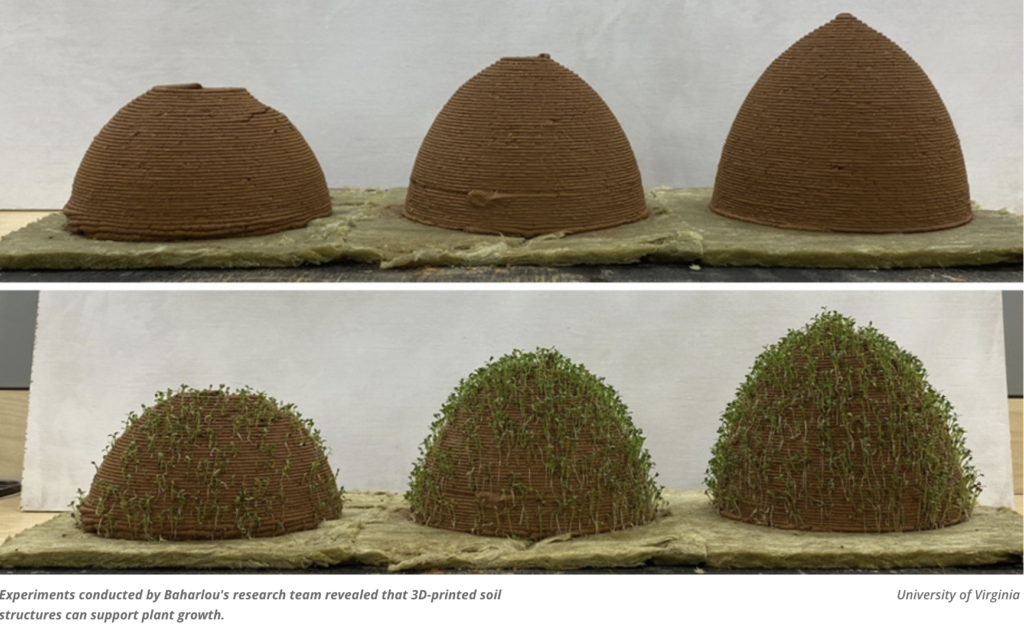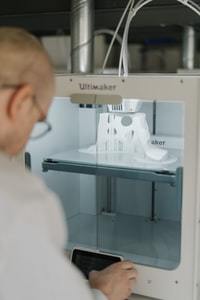A new step for 3D printing scientists is creating soil structures to grow plants. With the advancement of Three-dimensional printing technology to create soil structures that can support plant growth, a team believes that architects could use their approach to develop sustainable agricultural systems on other planets.

3D Printing Technology
The team hopes to use 3D printing technology to create soil structures supporting plant growth to develop sustainable agricultural systems on other planets. We can observe how far architecture has progressed with the developing technology today. Referring to this, we have even seen houses made with 3D printing technology before.
Now, a group of scientists from the University of Virginia is raising the bars of 3D printing technology by producing 3D-print soil structures which can grow plants on their surfaces. The team hopes to use 3D printing technology to create soil structures supporting plant growth to develop sustainable agricultural systems on other planets. However, this process could also have applications closer to home.
3D Printing Is Eco-Friendly
They believe that people could use their approach for this purpose and to create eco-friendly buildings and infrastructure on these planets. Did you know that houses are now being made with 3D printing technology? It’s true! And now, a group of scientists from the University of Virginia is taking this technology further by developing 3D-printed soil structures that can support plant growth.
This is an incredible development with huge potential implications, not just for creating eco-friendly buildings here on Earth but also for constructing sustainable infrastructure on other planets. Imagine being able to build homes and cities on Mars or Venus using this approach! The possibilities are truly endless.

Some of the benefits of using this technology include being able to control the environment in which plants are grown (e. g., moisture, nutrients), as well as potentially saving resources by recycling material back into the system.
This could have a massive impact on food production, architecture, and design. For example, we could see plant-covered buildings that help regulate temperature and humidity or Vertical Farming systems that use 3D-printed soil structures to maximize space and efficiency.
But this is just the tip of the iceberg. 3D printing can influence how we design, how we make things, and how we build. And that can have implications for saving money, creating jobs, and making us more sustainable.
3D Printing Innovation
When it comes to 3D printing, the sky’s the limit. Imagine how much food waste there would be with a closed-loop supply chain, where no matter what was left over after the fact, the industry would readily recycle it into a new product. It’s just one of the ways big businesses could start to reduce their environmental impact.

While the good news is that technology and innovation have kept us thriving, we still have a very long way to go. If we want a more abundant world, we must do more than create new technologies. We have to use the technologies we have to make the world a better place – and we can’t stop at just creating simply because our work has led to some new invention—growing meat in labs.
It is Stil in its Infancy
Although it is still developing, we could see lab-grown meat on our plates in the next century. From an environmental perspective, lab-grown meat could be a real game changer. With lab-grown meat, we could produce meat without raising and slaughtering animals and use land, water, and food for this purpose.
Can You Help?
We don’t want to offend you, but we’re reaching out and asking for your help in leaving us a comment. It’s easy to do and only takes a few minutes. We appreciate your feedback and want to ensure your voice is heard. Thank you!
We only ask for reviews from all customers to improve our services.
Don’t you agree that reading reviews of a business’s services or products helps you make an informed decision?
Bullwinkle

